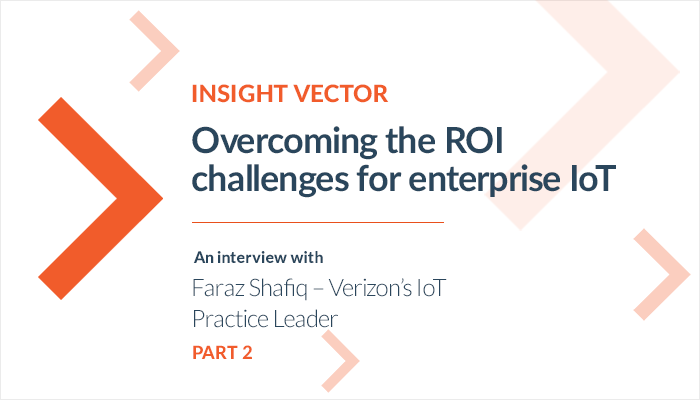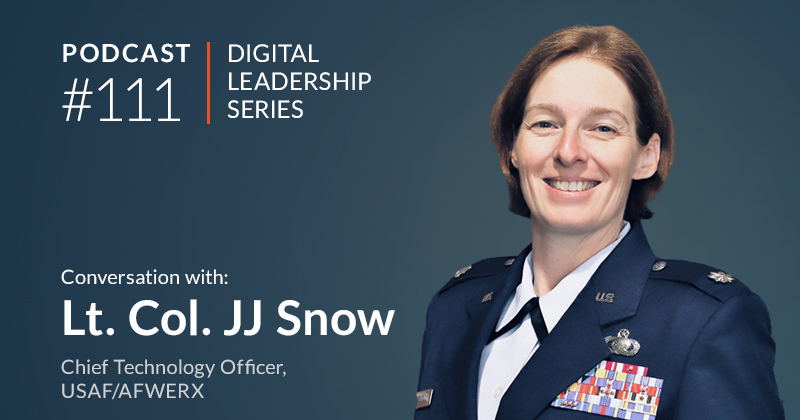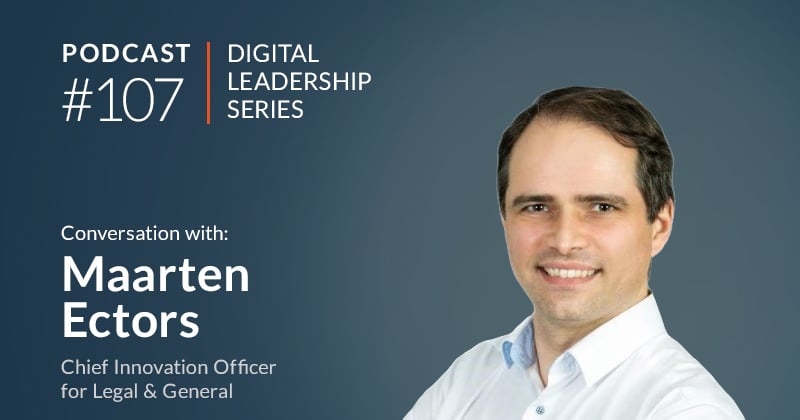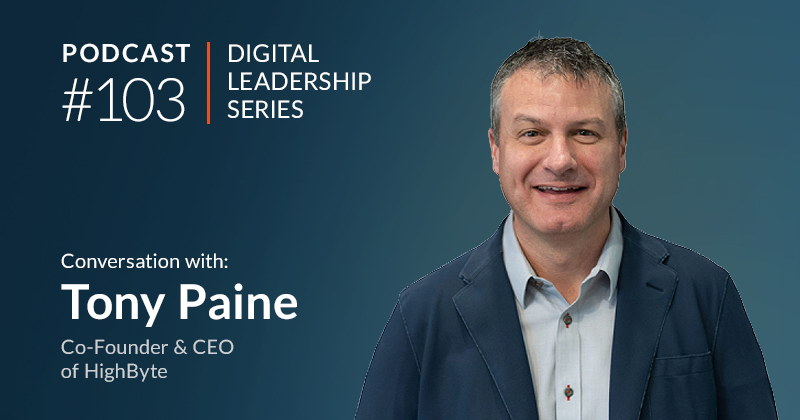Insight Vector: How IoT Adoption Considerations Differ from Small to Larger Firms – Part 2 of our Interview with Faraz Shafiq of Verizon
Ed Maguire

 Innovation and market perspectives from leading IOT innovators
Innovation and market perspectives from leading IOT innovators
In the last installment of our conversation with Verizon’s IoT Practice Leader Faraz Shafiq, we addressed the key ROI and organizational challenges that hinder the adoption of IoT solutions. In the second part of our conversation, we discuss the differences between dealing with large and small to medium scale firms. There’s a lot of customization work required in the early stage of Industrial IoT adoption, but for smaller customers or niche use cases it can be a challenge to justify developing unique technology. For a provider, choosing which emerging products and markets to go after is very difficult, because market dynamics and maturity curves are very different. Integration, choosing the right connectivity, and future proofing are the keys to success.
|
|
Faraz Shafiq |
Faraz Shafiq is the Global IoT Practice Leader responsible for Verizon’s enterprise IoT strategy, analytics and enablement. His key responsibilities include leading the long term IoT portfolio strategy, analytics, customer experience, and professional services. Previously, Mr. Shafiq was the lead for AT&T IoT product development and management. Mr. Shafiq holds an MBA from UC Berkeley and a Bachelor’s degree in Electrical Engineering. He also teaches Data Science and Strategy as well as Applied Innovation as a part time instructor at UC Berkeley’s Haas School of Business. Mr. Shafiq lives in northern California and works out of Verizon’s San Francisco innovation center.
What are the challenges for established firms that are unique to IOT?
Larger companies will have a senior leader dedicated to digital transformation with leverage – they have the capability to dedicate people to focused IoT projects. For large companies the sales cycles are fairly long but once the decision is made the projects are well-backed and often long-term. Medium to smaller companies face a bigger challenge with a lack of capabilities. For example, we work with a few vineyards in California on using new agriculture technology solutions but they don’t have much in the way of IT resources or skills. So the engagement needs to be much more thorough in terms of technology and business whereas for a large multi-national, it can be limited to standard products only.
IoT also demands creative capital models. Some enterprises prefer having everything on a “as-a-service” model including hardware. Scaling is also a challenge. For a large company that wants to engage Verizon, it’s fine to develop new APIs or technology because the investment is justifiable due to the scale. With smaller companies, it’s more befitting to go the standard solution route with limited customization - which can be achieved with a modular platform strategy. IoT requires a lot of complex integration so the platform becomes integral.
What are key challenges that IoT solution providers face in the market today?
The biggest challenge from a provider point of view is disconnecting from the market hype and establishing a solid business case. Take block-chain for example: the level of hype has not translated to hard numbers. Translating new technologies into ROI and sales typically falls short in early stages. Choosing which products and markets to go after is very difficult for a provider. The market dynamics and maturity curves are very different for SDN (Software Defined Networks), drones, AR/VR, block-chain etc. Meanwhile, clients are trying to put all the pieces together and they underestimate the complexity. The analogy here is cloud adoption. Customers can easily underestimate the finesse required to execute and maintain new projects and as a result not every customer realizes the benefits of cost savings they thought they would.
What are key success factors for providers in IoT markets?
IoT is probably the biggest ecosystem play out there – no one company can do an end-to-end solution for all key verticals. Companies that are doing well in IoT have an ecosystem approach. There are a lot of examples of companies coming together to focus on new market opportunities even though traditionally those companies may have competed or not worked together naturally.
Integration is a key challenge – an IoT provider needs to handle a very wide spectrum of technologies, device types and complexity. The capability to integrate with different products or solutions is critical for success.
Having the right connectivity is also very important. You need the right network and security for whatever you build on top of it. A reliable connection is just as critical to the business case as anything else.
The other key factor is future-proofing. Companies don’t spend money on projects they can’t future-proof. When you partner with a large provider like Verizon you can have the confidence that there will be an evolution path.
What business solution areas stand out in your view?
There are many different use cases depending on the vertical. In manufacturing, it’s about solutions that include condition-based and predictive maintenance (see Momenta's recent whitepaper on PdM solutions). For logistics and supply chain, it’s about asset tracking and monitoring. Fleet management is another big area. Verizon’s acquisition of Fleetmatics and Telogis addresses this need and even small fleet owners are finding this service valuable. Energy and healthcare also have a huge logistics and supply chain component, tracking shipments of oil and gas, pill tracking, patient monitoring etc. Both energy and healthcare are mostly regulation driven markets. For example the “pill to patient” concept to fight counterfeit drugs has regulatory compliance deadlines by 2019.
Can you share any recent book recommendations?
Recently I have been reading more books on strategy and storytelling like “The Art of Strategy” by Dixit and Nalebuff. When you’re building a strategy, technology considerations have to be connected to the business case. Take for example in New York City, Taxi Medallions were valued at over $1 Million a few years ago and were considered a very safe investment. Then came Uber and the value plummeted. In the Art of Strategy, digital is at the core. The other book is about storytelling called “The Story Factor” by Annette Simmons – which is critical when you are building products. The examples in our Innovation Labs always have a use case and a story line, and are not just cool science projects. There’s a story built into every solution. Unless you link to story or a persona you will fall short of customer expectations.
Momenta Partners can help firms navigate the obstacles in IoT with our four practices hyper-focused on the Connected Industry: Advisory, Executive Search, Mergers & Acquisitions, and Ventures. Contact us to learn more.




